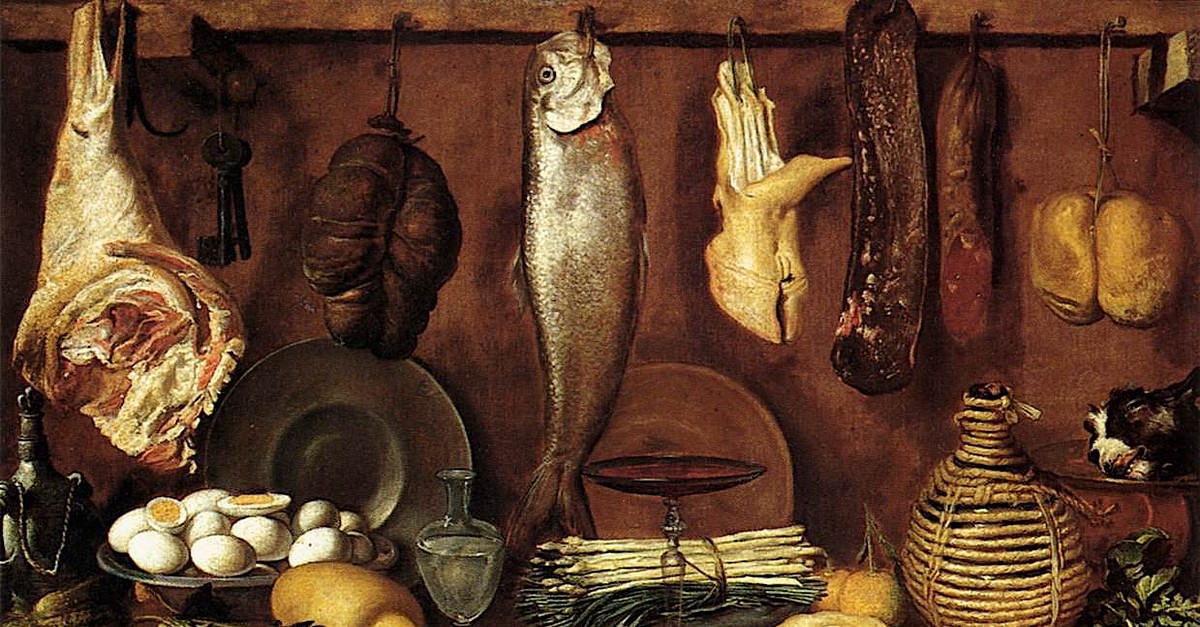Chapter V: Personal Aspects
Tudor eating
If you were rich, meals in Tudor times consisted almost completely of meat such as swan, peacock, boar, beef, geese and deer. In addition, it is a total misconception that most of the nobles did not consume fruits and vegetables at all. This is because their state would have an abundance of land to grow these produce on, and these were unlikely to be shown on purchasing records as they were already available from the fief.



They didn’t eat many vegetables compared to the poor who couldn’t afford meat because eating fruit and uncooked vegetables at the time was said to spread the plague. Eating that was likely highly discouraged, and combined with the high meat diet common to nobles of the Tudor era, usually resulted in constipation.
Modern sewage wasn’t implemented nationwide in Great Britain until 1898. Hence, water wouldn’t have been safe to drink as it could be contaminated. The wealthy during Tudor times would often drink wine.
Wealthy Tudors held many banquets and feasts that consisted of many different courses. Public banquets were less common, as most nobles would choose to have their meals in the comfort of their personal apartments.
Each course had many dishes that were brought out at the same time. This allowed the guests to choose what they wanted to eat.
The rich during Tudor times ate a wide variety of food and ate several times a day. Sugary foods were popular in Tudor England and importing sugar was very expensive. New foods started to arrive in Europe from the Americas in the 16th century. Turkey arrived in Tudor England in 1525. Potatoes were brought to England during the 1580s but weren’t popular to begin with. During this time, tomatoes arrived in Tudor England from Mexico and apricots began to be imported from Portugal.

During their meals, wealthy Tudor people liked to show off their wealth through what their plates and bowls were made from. If you were very rich you could afford to eat off silver or gold plates. The middle classes had bowls and dishes made of pewter. No one ate with forks during Tudor times. Most people ate with knives or spoons or with their fingers. Wealthy people could afford to have silver spoons.
Despite the misgivings surrounding Tudor dining etiquette where most believed the Tudors ate like savages, they had quite a few rules surrounding dining. Sophisticated table manners were the norm meaning King Henry VIII was rather adept at quickly carving up his food and stuffing it into his mouth with a knife and spoon.


The high protein and sugar content in the average Tudor diet usually amounted to about a daily intake of 5000 calories per day. This could be mitigated by an active lifestyle which included but was not limited to jousting, riding, fencing, dancing in heavy garments and so on.
Unfortunately, after Henry VIII suffered from an ulcer on his leg, preventing mobility but did not reduce his caloric intake, soon swelled to an immense size. In this regard, Elizabeth I differed from most of her peers.
Living habits
In comparison, Elizabeth Tudor was known to eat sparingly for fear of swelling into an obese figure like her father who at the time of his death, had swelled to an ungodly 177kg.

Another habit which would have been considered unusual by contemporary standards at the time would be her frequent exercise where she frequently danced, rode, and walked so fast her younger ladies in waiting could barely keep up with her. Those 2 habits kept her healthy till her death.
Due to a high number of suspected assassination plots against Elizabeth I, trusted advisor William Cecil mandated that anything ”that shall touch any part of her majesty’s body bare” had to be put through rigorous testing by her ladies-in-waiting for her safety before she could even go near them. That likely extended to perfumes and cosmetics which were gifted to her. Although considering the composition of some Tudor cosmetics which consisted of arsenic, mercury and lead; it would have poisoned her regardless.
Personal Attributes
Elizabeth Tudor kept a seven foot long unicorn horn (actually a narwhal tusk) which according to contemporary beliefs was believed to be a panacea for poisons. It was priced at 10,000 pounds, around the cost of a decently sized castle.
Deadly Beauty

Aside from a nearly fatal bout of smallpox when she was 29, Elizabeth Tudor remained in relatively good health, and would have been for longer, if not for her dangerous habits regarding make-up. Many of her concoctions used to provide a pale complexion often contained lead, mercury and arsenic. Lead and arsenic provided her with the desired pallor of the upper classes and cinnabar (blush) which contained mercury may have contributed to an early demise.
In the last few years of her life, Elizabeth had developed a strong streak of paranoia. Her own godson noted that she often walked around in her bedroom, stumped her feet at the news and carried around a rusty sort that she would often thrust into a tapestry when angered. The declining of her mental faculties could be attributed to the heavy metal poisoning she had been exposed to over decades.


She made her physician swear, they wouldn’t perform a post-mortem, and she forbade them from embalming her. However, those wishes were overruled as her physicians still performed minimal post-mortem on her. Her rotting body stayed in the coffin for around a month before she could be buried. This was due to her court waiting for the arrival of her successor James VI, from Scotland. Thus, her decomposing body produced an ever-increasing volume of gases until the coffin would explode from the strain. That day came when one night, an explosion ripped open the casket, with a deafening crack, spewing foul gases everywhere.